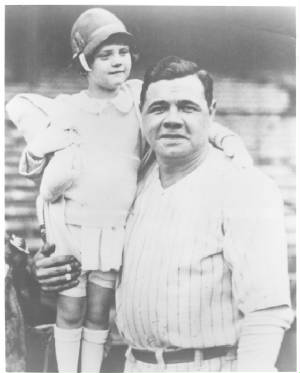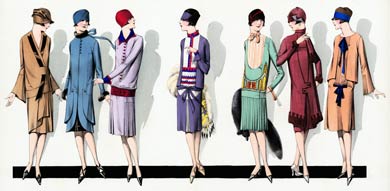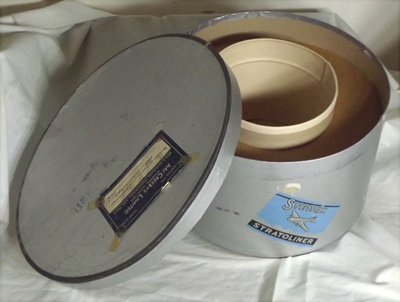 |
| Courtesy of Wikicommons |
However, not too many people know that he had an illegitimate daughter. In fact, his daughter didn't even know it until 1980 when she was 59 years old.
Let's start with Babe's marriage to Helen Woodford in October, 1914. Just months before the wedding, he signed a contract to play for the Boston Red Sox. Only nineteen years old at the time, he was too young to know what life and marriage were all about. He was trying to adjust to all the fame and attention coming his way. The results were a rocky marriage from the start.

When the couple moved to New York in 1920, things got worse. Helen preferred living a quiet life, while Babe thrived in the notoriety that life in the city brought. He had a mistress named Juanita Jennings who gave birth to a baby girl on June 7, 1921. Babe persuaded his wife that they should adopt the newborn without telling her the baby was his child.
Dorothy Helen Ruth, raised as the adopted daughter of Babe and Helen, was told that they adopted her from an orphanage. Helen accepted Dorothy and took her back to Massachusetts and raised her on her own when Babe and Helen parted ways. Because of their Catholic faith, they didn't divorce, but lived in different states. When Helen was killed in a house fire in 1929, Dorothy's life changed dramatically.
After his first wife's death, Babe Ruth married the love of his life Claire Hodgson, who had a daughter of her own. The Ruths raised Dorothy and Julia during the heyday of Babe Ruth's winning career. Claire Ruth brought to the family stability and management that was lacking in Babe Ruth's life prior to that time.
The ironic thing about the situation was that Juanita Jennings was a friend of the family during Dorothy's growing-up years. Dorothy knew her as a friend of her father. It wasn't until 1980 when Juanita Jennings was dying that Dorothy found out the truth that Juanita was her biological mother and Babe Ruth was her biological father.
Dorothy's parentage was such a closely held secret that Julia had a hard time believing Juanita's story when the truth came out long after Babe's 1948 death. A rift between the two step-sisters developed in their later years. Not surprising with the secret coming into the open.
After she found out the truth, Dorothy wrote a book "My Dad, the Babe". This book, a memoir to her father, explained that she was not well treated by her step-mother Claire Ruth. It must have been interesting living in a household where Dorothy was the daughter and undoubtedly favorite of Babe, and Julia was the daughter and favorite of Claire. I imagine that this was a cause of friction during their younger days also. In the midst of all this, it was reported that Babe doted on his girls and enjoyed home life with them whenever he could be with them.
Sounds like an interesting household.
Information taken from Dorothy Ruth and Babe Ruth: The Family Man (which didn't even mention the fact that Dorothy was the daughter of Babe Ruth).











